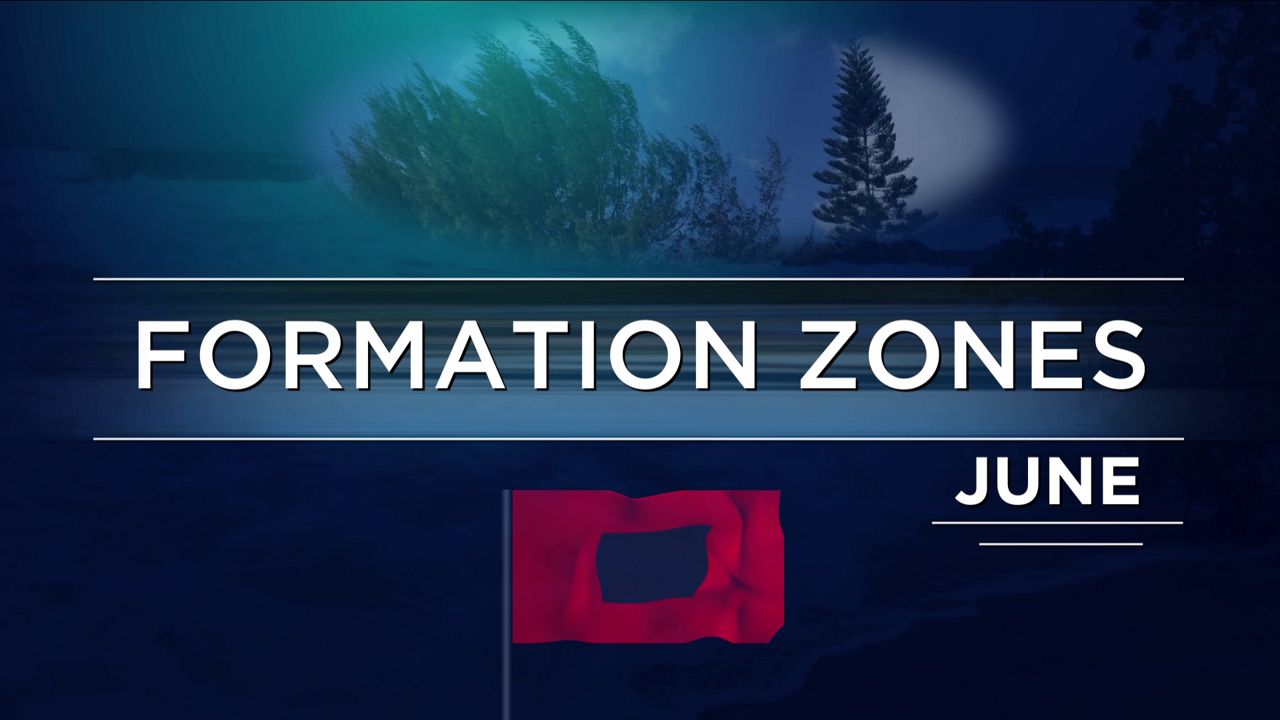ST. PETERSBURG, Fla. — Hurricane season is quickly approaching.
June 1 marks the official start of the 2021 Atlantic hurricane season. Now is the time to start preparing your hurricane plan for this year, as the season could be an above average one.
Hurricane season in June is always one to watch because weakening fronts that stall over the Gulf of Mexico can trigger tropical development. The Florida Panhandle region is especially susceptible for tropical systems in June.
Tropical storm formation in June is focused over the Northwest Caribbean Sea and the Gulf of Mexico.
It’s fairly uncommon to see tropical formation out in the middle of the Atlantic this time of year due to excessive dry air from the Sahara Desert. Therefore, the Caribbean Islands like St. Marteen, Puerto Rico, Cuba, etc., are less at risk than areas along the Gulf Coast.
There tends to be two favored tracks during the month of June.
Track A is favored when storms over the western Gulf of Mexico are pulled north toward the West-Central Gulf Coast.
Track B is favored when storms over the eastern Gulf of Mexico are pulled to the north and northeast, usually toward the Florida coastline.
Many storms are known for taking a north-to-northeast track over this location. We see this often in June, although most of the storms during this time of year tend to be weaker ones.
The first name on the list this year is Adria.

Here are five more things you should know about Hurricane Season in June:
- Northwestern Caribbean Sea and Gulf of Mexico tend to be typical formation zones
- Texas Gulf Coast and Florida Panhandle are most prone in June
- Cold fronts act as a corridor for tropical systems, often steering it north and northeast
- Hurricane Alma became a major hurricane off the Florida coast in June 1966, making landfall over the FL Panhandle with 90 mph winds (Cat. 1)
- Tropical system forms in June every other year, on average
Hurricane season ends November 30.



